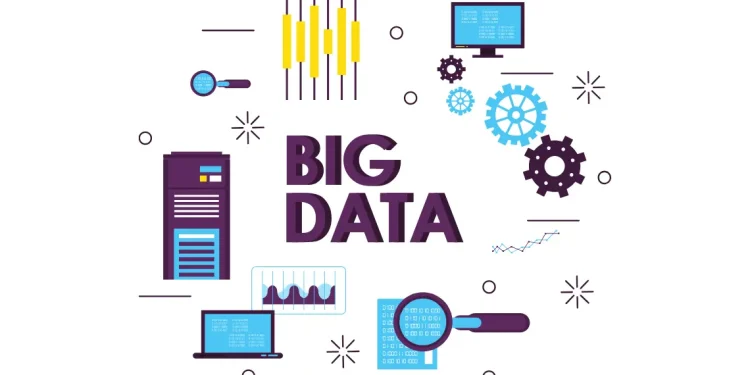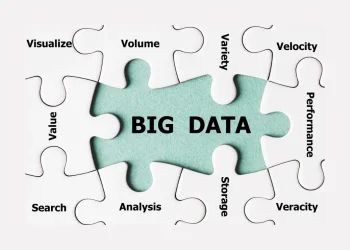The digital revolution has sparked an explosion in data generation, making advanced database systems pivotal for modern computing. Big data, defined by its Volume, Velocity, Variety, Veracity, and Value (the 5V’s), introduces unique challenges that require innovative approaches.
This blog explores critical insights into big data challenges and advanced database systems, highlighting how these systems evolve to meet the demands of a data-driven world.
Table of Contents
Defining Big Data Challenges
Big data’s vast scale and complexity demand a rethinking of traditional database and analytics approaches. Core challenges include:
Scalability
With exponential data growth, systems must scale efficiently without compromising performance.
Solutions include distributed architectures, efficient data partitioning, and real-time processing.
For example: Netflix uses distributed systems to handle billions of data streams daily.
Diversity
Big data comes in diverse formats—structured (databases), semi-structured (JSON, XML), and unstructured (images, videos).
Managing this heterogeneity requires adaptive workflows and flexible integration mechanisms.
For example: Social media platforms process text, images, and video simultaneously.
Processing Complexity
Real-time applications like fraud detection and IoT analytics demand instant insights with minimal latency.
For example: Financial institutions rely on high-speed algorithms to detect fraudulent transactions in real time.
Infrastructure Costs
The balance between performance and cost is critical, as the infrastructure needed for big data storage and processing—such as high-speed storage solutions and large-scale distributed systems—can be expensive.
The 5V’s of Big Data
The 5V’s are the foundation for understanding big data and its unique challenges:
1 – Volume
Refers to the vast quantities of data generated daily by systems, sensors, users, and devices worldwide.
Fact: Data production exceeds zettabytes annually, requiring scalable storage systems.
2 – Velocity
The speed at which data is created and processed, demanding real-time analytics.
Example: Social media, IoT devices, and financial systems generate data at millisecond intervals.
3 – Variety
Data comes in multiple formats, including structured (databases), semi-structured (XML, JSON), and unstructured (images, videos, text).
Handling such diverse data types requires flexible systems and interoperability across platforms.
4 – Veracity
Focuses on the accuracy, reliability, and quality of data.
Poor-quality data can lead to incorrect insights, making data cleaning, validation, and transformation critical steps in the data pipeline.
5 – Value
Extracting actionable insights is the ultimate goal of big data systems.
Example: Retail giants like Amazon use big data to optimize supply chains and enhance customer experiences.
Implications of the 5V’s
Each V introduces unique challenges:
- Volume and velocity: Demand scalable and distributed storage and processing systems.
- Variety: Requires adaptive integration techniques and flexible programming models.
- Veracity: Calls for rigorous data governance and validation.
- Value: Relies on effective analysis, visualization, and knowledge extraction.
Big Data Management: Characteristics and Challenges
Big data systems must tackle five interconnected challenges:
1 – Scalable Infrastructure
Big data systems rely on parallel and distributed processing to handle massive datasets efficiently.
They must optimize query performance, support late-bound schemas, and ensure data consistency across distributed nodes.
Metrics and benchmarking are essential to gauge the efficiency and reliability of these infrastructures.
Innovations in hardware (e.g., GPUs, FPGAs) and cost-efficient storage solutions are critical to managing infrastructure demands.
2 – Diversity in Data Management
A one-size-fits-all solution is no longer viable in today’s landscape of diverse data sources and formats.
Cross-platform integration is necessary to unify disparate systems, while programming models and data processing workflows must adapt to evolving needs.
Customization for specific use cases, such as IoT or social media, further compounds the challenge.
3 – End-to-End Pipelines
The data-to-knowledge pipeline involves collecting, cleaning, transforming, analyzing, and presenting data.
With the diversity of tools available (open-source and proprietary), creating seamless workflows tailored to specific requirements is essential.
Knowledge bases and metadata management enhance understanding and reuse of data.
4 – Cloud Services
Cloud computing revolutionizes big data management through Infrastructure as a Service (IaaS), Platform as a Service (PaaS), and Software as a Service (SaaS) offerings.
Features like elasticity, multitenancy, and hybrid cloud solutions enable scalable and cost-efficient data management.
Challenges include maintaining security, minimizing latency, and managing resource allocation dynamically.
5 – Human Roles in Data Lifecycle
The data lifecycle involves producers (data generators), curators (organizers and validators), and consumers (insight users).
Crowdsourcing and community contributions enhance data curation, while tools for collaboration empower users at all stages of the lifecycle.
The growing role of humans emphasizes the need for intuitive interfaces and systems that support decision-making at scale.
Evolution of Database Research
The Beckman Report (2016) and Seattle Report (2022)
These reports highlight progress and challenges in database research.
Predicted Trends
The Beckman Report foresaw data-driven systems and emphasized the need for ethical governance.
Missed Opportunities
Underestimated AI/ML’s transformative potential.
Rapid advancements in AI/ML left gaps in database systems optimized for these workloads.
Emerging Concerns
IoT, serverless computing, and Data Lakes have grown rapidly, yet database systems struggle to capitalize fully.
Innovations in hardware (e.g., GPUs, ASICs) demand novel database designs.
Database Systems in Data Science
Database systems are integral to data science, supporting key processes:
- Data Cleaning and Transformation: Prepares data for analysis through standardization and validation.
- Analytics and Visualization: Enables real-time analytics and supports decision-making.
- Metadata Management: Ensures data reliability, transparency, and scalability.
Cloud Computing in Big Data
Cloud computing revolutionizes database systems with features like:
Elasticity
Cloud services dynamically scale resources based on demand, ensuring efficient use of infrastructure while minimizing costs.
This elasticity is valuable for businesses handling fluctuating workloads, such as seasonal demand spikes or large-scale data processing.
Multitenancy
Cloud databases often operate on shared infrastructure, significantly reducing operational costs.
Advanced virtualization techniques ensure resource isolation and security for multiple users on the same platform.
Edge Computing
By combining cloud resources with real-time processing at the edge, systems can process data closer to the source, reducing latency and improving responsiveness.
Edge computing is beneficial for IoT applications, where real-time analytics are crucial.
Advanced Topics in Big Data Systems
Innovations in database engines include:
- Distributed Transactions: Manage data across geographically dispersed systems.
- Data Lakes: Store unstructured and structured data in its native format for flexibility.
- Machine Learning Integration: Optimize databases through automated indexing and query processing.
Real-World Applications
Big data systems power transformative applications across industries:
- Smart Cities: Use IoT devices for real-time traffic management and environmental monitoring.
- Retail: Optimize supply chains and personalize customer experiences.
- Healthcare: Analyze patient data to improve diagnostics and treatment outcomes.
Ethical and Legal Considerations in Big Data
- Data Privacy Regulations: Laws like GDPR and CCPA govern data usage, ensuring compliance and building trust.
- Bias and Fairness: Diverse datasets and transparency prevent biased outcomes in AI/ML systems.
- Data Security: Encryption, MFA, and continuous monitoring protect against breaches.
Conclusion
Big data offers unprecedented opportunities and challenges. By addressing the 5V’s, embracing innovative database systems, and leveraging cloud and AI technologies, businesses can unlock actionable insights.
Resources for Further Reading
Books and Publications
- Big Data: Principles and Best Practices of Scalable Real-Time Data Systems by Nathan Marz.
- Designing Data-Intensive Applications by Martin Kleppmann.
Online Courses
- Big Data Specialization: Available on Coursera, covering foundational and advanced big data concepts
Research Reports
Reference
Goebel, V. (2022). Advanced Database Systems for Big Data – Challenges. Lecture Slide, University of Oslo.
🚀 Before You Go:
- 👏 Found this guide helpful? Give it a like!
- 💬 Got thoughts? Share your insights!
- 📤 Know someone who needs this? Share the post!
- 🌟 Your support keeps us going!
💻 Level up with the latest tech trends, tutorials, and tips - Straight to your inbox – no fluff, just value!















Hi, hope you’re doing well! My name is Paula, and I’m a marketing analyst at Teravision Technologies, a nearshore IT service provider in LATAM. I’ve been following WebDevStory for a while now and especially enjoyed your blog post on Database Scalability, it’s a fantastic resource for industry professionals.